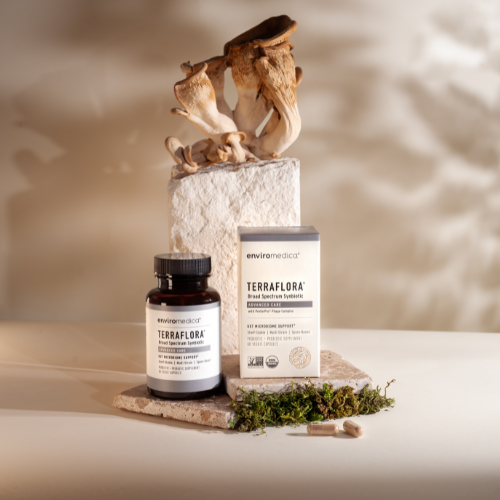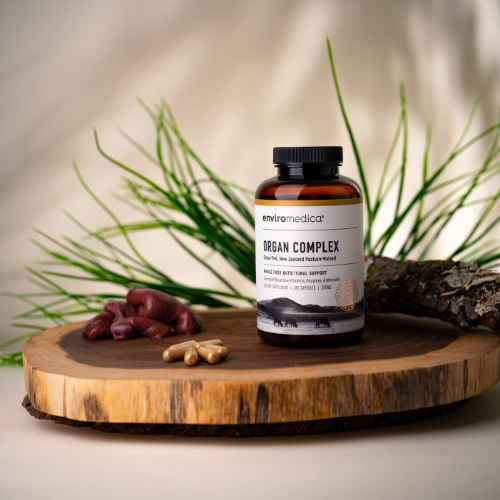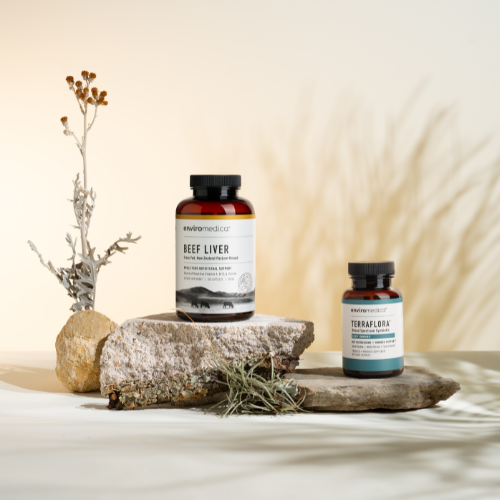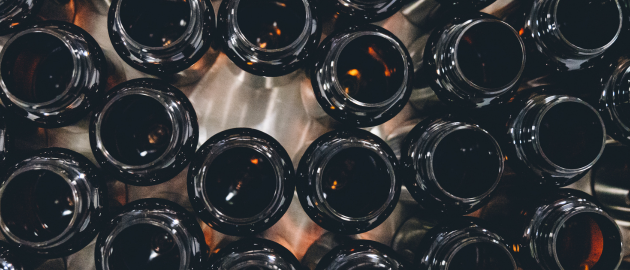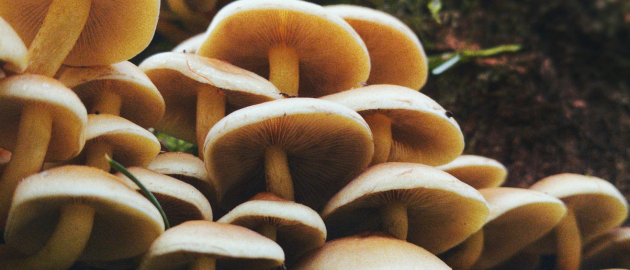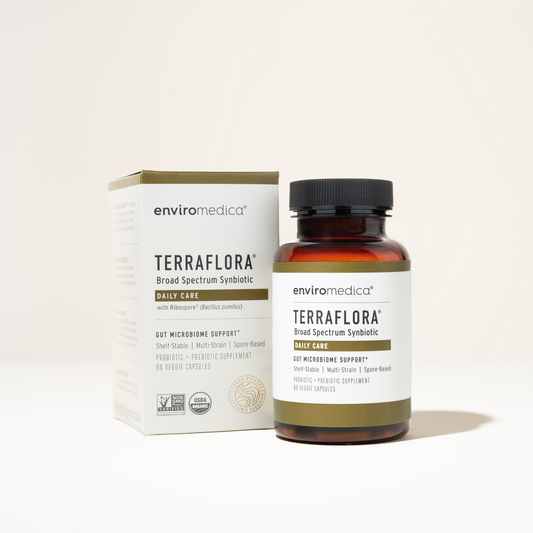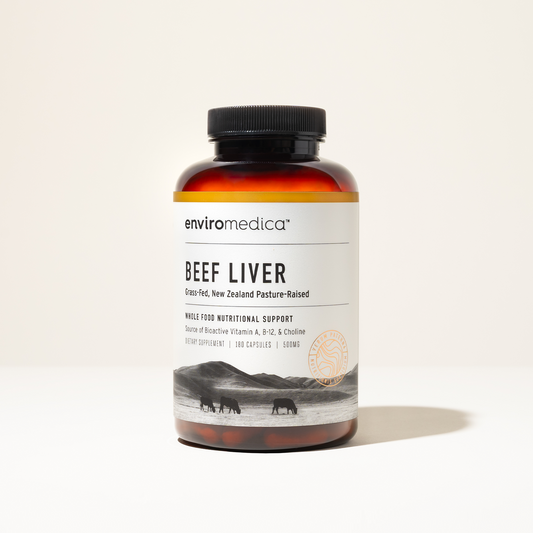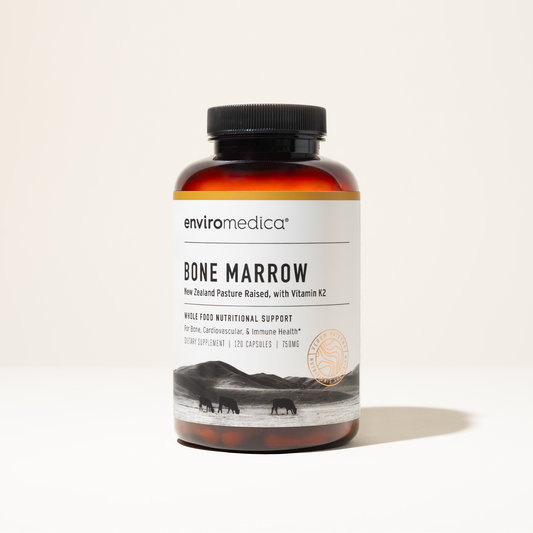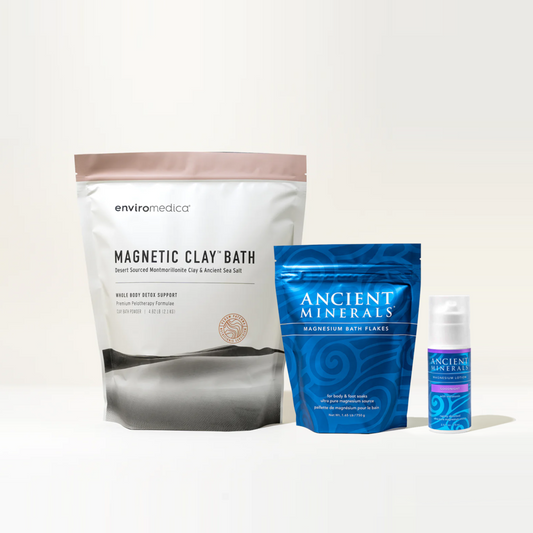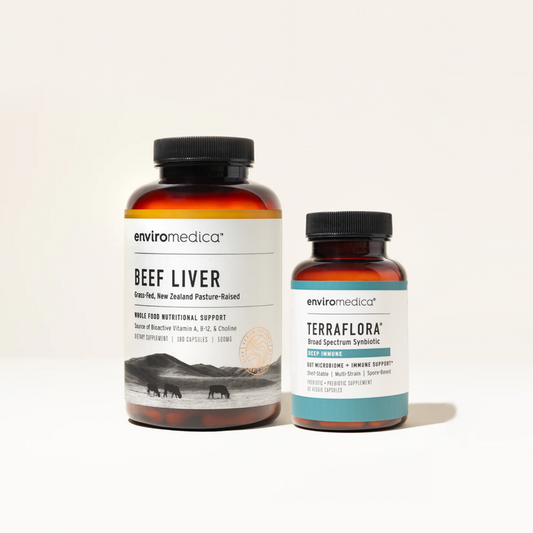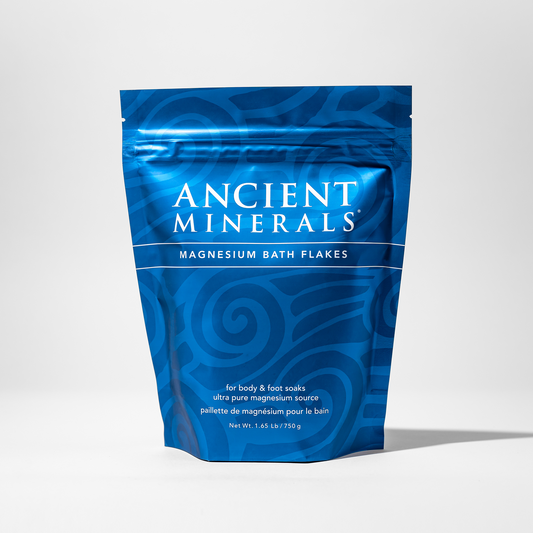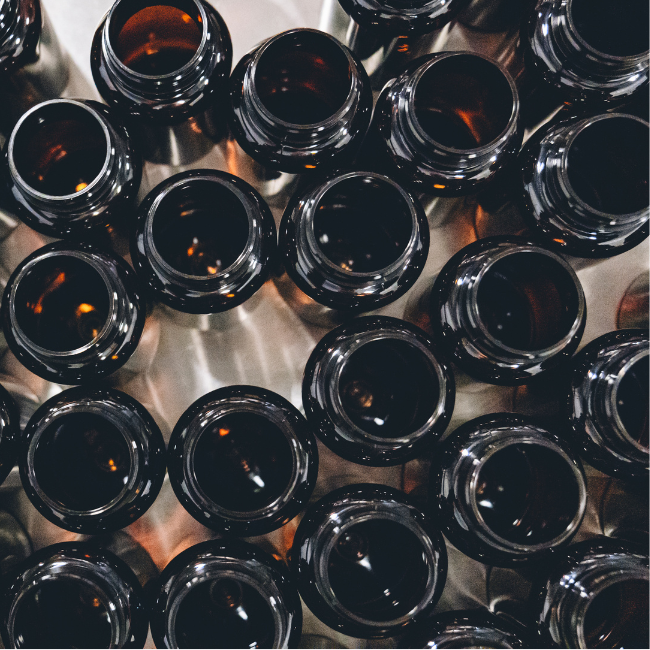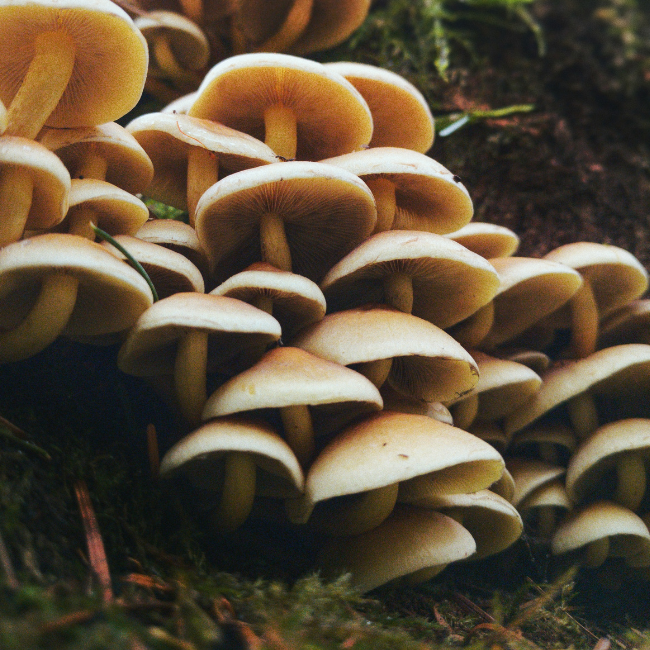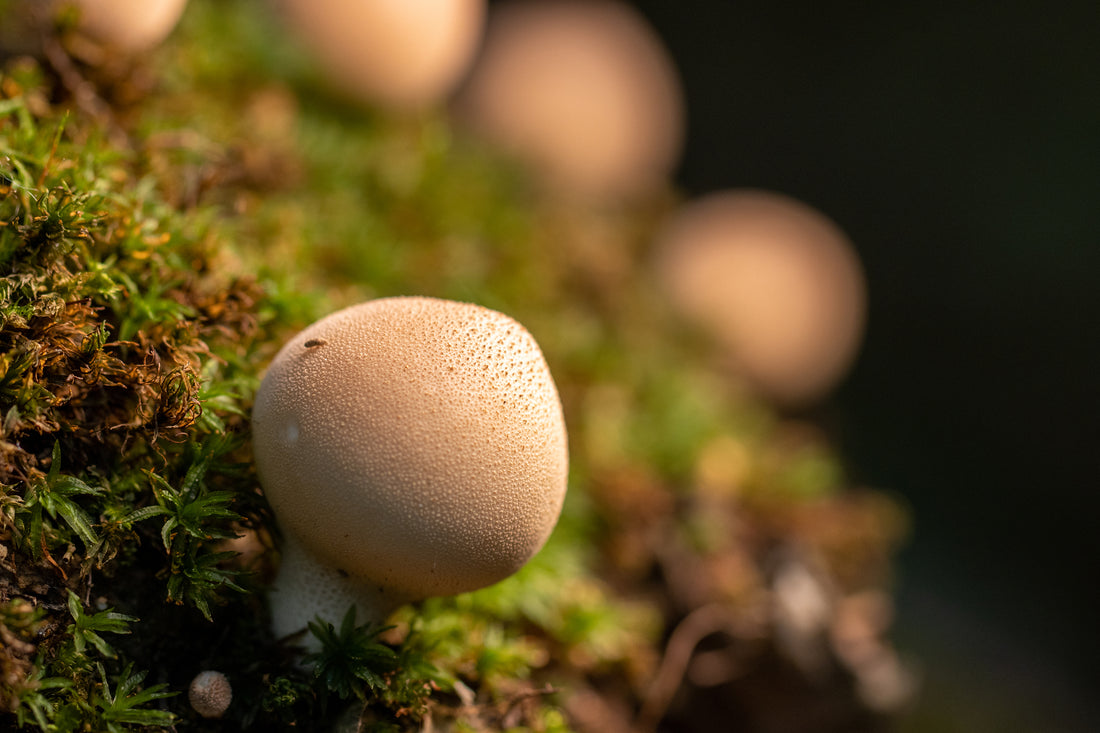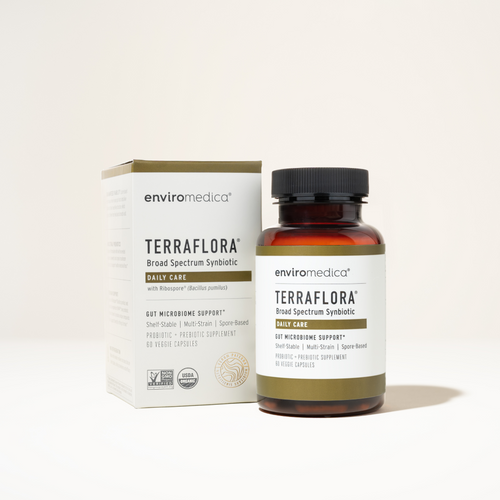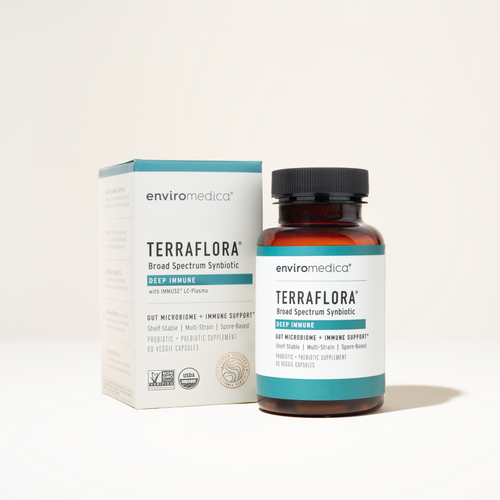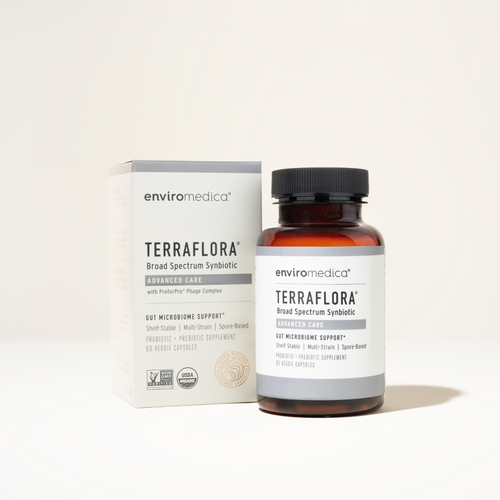All you need to know about the best soil based organism probiotics
Evidence-based science illuminates some pretty interesting details about the human body. Simply put, the human body is an ecosystem, host to trillions of microorganisms including bacteria, archaea, viruses, yeasts, fungi, and parasites known collectively as our microbiota. The amazing diversity of our microbial inhabitants became clear when the study of microbes shifted from Petri dishes where only a small fraction of microbiota survive (~10%), toward genomic analysis capable of measuring the presence of all microbes, dead or alive. The genetic material of our microbiota is known as our microbiome. 1 2 3
Frontier microbiome research led scientists to understand the integral role microbes play in our health; by assisting in digestion, nourishing us via their metabolites, creating and enabling neurotransmitters, metabolic health, and training our immune system. 4 5 6 Exposure to microbes begins at birth; bacterial communities vary in babies born vaginally vs. via c-section.7 Those born vaginally have decreased rates of asthma, allergies, and celiac disease, perhaps related to the microbes they were seeded with.8 The new paradigm of ‘healthy bacteria’ raises a few questions about how our modern environment and lifestyle may have inadvertently altered our interior ecosystems and consequently our health.
Probiotic foods and supplements are now a relatively mainstream approach toward increased health via this new healthy bacteria paradigm. Probiotics are widely understood to be bacteria that are beneficial to digestive health. Scientists have more powerful tools than ever to study the complex world of bacteria, revealing information on a new sub-category of bacteria, known as soil based probiotics or sbo probiotics: traditional organisms rooted in their inherent viability. These are probiotic soil based organisms.
What are soil based organisms and why are they beneficial?
Soil based organisms (SBOs) or SBO probiotics define a class of probiotic supplements based on a greater understanding of the incredible diversity of the human gut, coupled with a deeper appreciation for how humans and their commensal “helper” bacteria work together to produce a healthy system.
Soil based bacteria have a 3-stage life cycle, with each stage triggered by nutrient availability: vegetative growth, sporulation, and germination. The sporulation phase is particularly relevant to its potential as a probiotic. The spore structure preserves the bacteria in a dormant phase and against any harm whether in any terrestrial environment or in the acidic environments of the stomach and upper intestines. When these soil probiotic microbiota are ingested, they travel all the way to the lower intestine where they come alive. Like a seed, warm temperatures, moisture, and nutrients stimulate the germination stage where bacteria emerges from dormancy.9 Soil-based probiotics are well-adapted to the environment of the gut, and have been shown to remain in the digestive tract where they can provide long term benefit.
SBO probiotics are characterized by two traits that make them superior to other probiotics; 1) the spore phase enabling natural resistance to the harsh environment of the upper digestive tract and stomach, and 2) inherent environmental stability that does not require the addition of specialized coatings or preservatives to ensure a clinically relevant amount reaches the appropriate areas of the gut.
Though SBO probiotics are based directly on symbiotic communities of bacteria found in natural soil environments, these organisms are not harvested directly from the earth to be packaged as a supplement. They are instead produced in a safe, monitored environment to ensure specificity of the strains.
Why are soil based probiotics so popular among clinicians for many conditions, what makes them so important, and what are the best soil based probiotics? The answer to this question lies in an understanding of the human gut microbiome.
Introducing the microbiome
Since 2007, scientists at the National Institute of Health (NIH) Human Microbiome Project have been honing in on the phenomenon of bacteria hosted in the human body. In 2008, the European Commission and China created the Metagenomics of the Human Intestinal Tract Project (MetaHIT) to join this study.
For centuries, scientists have recognized a limited number of pathogenic bacteria for which antibiotic therapies have become the mainstream treatment. New DNA sequencing techniques coupled with data revealed from the Human Genome Project have made it possible to study a vast world of ‘germs’ – both pathogenic and beneficial – that dwarf our previous knowledge.10
While we inherit more than 22,000 genes from our parents, the bacteria that exist in and on our bodies sustain at least eight million bacterial genes, a whopping 360 times more bacterial genes than human genes. The genetic material from bacteria that populate the human body is known as the human microbiome.11
Your microbiome is likely similar to that of your immediate family, as we naturally inherit our family’s microbiota. Through the course of our lives, we pick up “hitchhikers”, bacteria from food, water, and various components of our environment. Scientists estimate that we each carry 100 trillion bacteria in our intestinal tract alone!
In this teeming landscape of bacteria, the host (that’s you) derives benefit while the other is relatively unaffected. This is known as a commensal relationship. However, some researchers favor the term mutualistic (both partners derive benefit) when describing the evolving bacterial communities in the gut.
The balance of bacteria and your health
In 2010, the Human Microbiome Project published an analysis of 178 genomes from bacteria that live in or on the human body. 10,000 different types of bacteria in the human body have been identified, including novel genes and proteins that serve functions in human health and disease.12 The vast numbers of bacteria discovered appear to provide benefit to the human body, not harm.
Martin J. Blaser, chairman of the Department of Medicine and a professor of microbiology at the New York University School of Medicine states:
Germs make us sick, but everyone focuses on the harm. It’s not that simple, because without most of these organisms we could never survive.13
Further, he adds: “I have been a practicing physician and medical researcher for more than thirty years, and this is the most exciting and important work of my lifetime.”14
As scientists map the human microbiome, they are beginning to understand the difference between normal and abnormal. Proper bacterial balance is vital to healthy immune system function, providing appropriate protection against potential infections, playing a critical role in the digestion and absorption of food and nutrients, and even regulating mood. The interaction of multiple strains of bacteria is an essential element in health and wellbeing.15
The optimal balance of bacteria can be altered in many ways.
- Broad spectrum antibiotics that kill bacteria in the gut indiscriminately16
- Prescription medications17
- Disease-carrying bacteria, fungi, parasites, and yeasts
- Stress18
- Lack of sleep19
- Poor Diet & Lifestyle20
- Geography21
- Travel22
- Physical disconnection with nature23
Researchers believe changes in gut bacteria may even affect the brain and personality. Germ-free mice have been shown to be dramatically more anxious and hyperactive than their counterparts with a normal microbiome. These changes have also been associated with neurochemical changes in the mouse brain.24 25
Evidence supports the concept that microbiota balance can have a large impact on healthy metabolic processes. This delicate balance has a definite impact on nutrient acquisition and overall energy regulation. Research has pointed to the impact of Firmicutes and Bacteroidetes balance on fat mass and obesity, and as fat mass increases so does the release of powerful signaling molecules called cytokines, many of which impact inflammatory processes. Appropriate signaling is essential to maintaining the healthy metabolic nature of the body and, when problematic, could represent an initial stage in the development of metabolic syndrome.26 27
The impact of the gut microbiota is far reaching in the body. Continued investigation into the microbiome will yield powerful data, enabling the development of novel options to support healthy mood, metabolism, signaling molecules and much more.
What are soil based probiotics?
The human body has evolved over the millennia in relationship with its microbes. When its microbial community is altered significantly, human health is consequently affected.
It is important to point out that bacteria have a large evolutionary head-start on humans. Bacteria represent the oldest known life on the planet, with evidence of their existence in rocks that are 3.77 billion years old.28 Bacteria have evolved to fill every ecological niche on Earth; from the deepest ocean trenches and volcanic mid-ocean ridges, to extreme saline environments, to subglacial lake environments, to deep within the Earth’s crust and into the mantle. ‘Sterile’ environments are not at all the norm. Soil based organisms and bacteria are found in amazing diversity and abundance in soil where they function in the soil ecosystem in ways that are similar to their function in our gut ecosystem.29 Gut and root microbiota commonalities.30 31
In fact, farmers are beginning to understand that their job is not to grow crops, but instead to literally cultivate the soil ecosystem to enable crops to grow without added nutrients or water. This is a process known as regenerative farming.32 33
Bacteria are incredibly ubiquitous, highly adaptable ancient life forms that have evolved relatively unchanged over nearly 4 billion years of time. In contrast, the earliest Homo sapiens first appeared on Earth around 200,000 years ago, likely with a fully functioning microbiota inherited from its ancestors. One could argue that human beings (or any other species in our Kingdom) wouldn’t be here without the earliest natural innovation: Bacteria.
With that in mind, what would have been the major influences on the microbial communities housed in and on our ancestors?
- Diet: Our hunter-gatherer ancestors had a diet consisting primarily of wild plant foods; vegetables, roots, fruit and berries and a limited amount of wild game. The landscape was rich in fruits and vegetables gathered from bushes, trees, and the ground. This natural diet informed and shifted their microbial communities seasonally.
- Soil: Our ancestors did not eat ‘triple washed’ spinach. They ate food as they gathered it, without washing, dirt and all.
- Environment: Our ancestors lived outside, intimately connected to the bare ground. They were literally bathed in soil bacteria. We witness this in other parts of the animal kingdom today. Animals take ‘dust baths’ enabling ammonia-oxidizing soil bacteria to keep their skin clean.
- Circadian cycles: Just as all other living organisms on Earth, microbes have changes in cellular function on a 24-hr cycle. Our ancestors could not extend their daylight hours with lighting, consequently, their circadian rhythms were in sync with their ecosystem. 34
- Stress: Presumably, our ancestors did not face the same chronic stress that we experience today (financial, job-related, road rage, health-related). Stress has been shown to impact gut microbial communities via the gut-brain axis.35
- Birth: Cesarean section is a relatively new birthing technique. Our ancestors were all delivered vaginally. Today we understand that babies delivered vaginally are seeded with Lactobacillus communities that help them to digest breast milk.36
Bacteria were integral to this ancestral landscape – just as they are today – evolving in synchrony with the human body. The ancestral body adapted to bacteria encountered in their world and vice versa. Soil in this pre-agricultural era was naturally teeming with soil microbes. Soil bacteria are critical to enriching plants with important micronutrients that consequently feed us.
Modern conventional farming practice is to till the soil and make use of pesticides, herbicides and other chemicals to improve yield. This approach has disrupted the soil ecosystem, creating an imbalance of valuable microbes while depleting micronutrients, like zinc, calcium, and selenium. Micronutrients that are critical to human health.
Researchers are connecting the dots between the farming practices that destroy natural ecosystems, sterile environments, rate of c-section, formula feeding, and antibiotic use and the dysbiosis of our own gut communities. As microbial diversity decreases in our soil environment and our gut environment, the rate of inflammatory bowel disease, diabetes, obesity, allergies, and asthma has increased.37
Are soil-based probiotics good for SIBO?
SIBO, or small intestinal bacterial overgrowth, results from an imbalance of bacteria, specifically when there are large numbers of unwelcome bacteria in the small intestine. Although it depends on what type of overgrowth and how it is manifesting, other sensitivities, and dietary protocol, overall, soil-based probiotics are generally safe and can be effective for SIBO patients.
The new frontier of probiotics
A paradigm shift is underway. Increasing numbers of farmers are focused on sustainable and regenerative agriculture. They are rebuilding the soil naturally with grazing animals and time alone with the goal of restoring the rich terrestrial environments that our ancestors enjoyed. Consumers are speaking with their dollars and seeking out natural foods that are rich in nutrients. They are shunning genetically engineered food-products and want to know their food is biologically safe.
This shift in dietary awareness comes with an accompanying shift toward ancestral health practices. An important tenant of ancestral health is exposure to the beneficial microbes people have co-existed with for millennia. In recognition of how deficient our modern society is with respect to connection with healthy soils, many are turning to soil-based bacteria as a naturally resilient source of healthy probiotic bacteria.
Clinical research supports and practitioners recommend soil-based probiotic supplementation as a health promoting practice, for everything from gastrointestinal health including abdominal pain and bloating,38 39 to counteracting the effects of antibiotic and antiretroviral use,40 41 to decreased respiratory infections (33), to improved post exercise muscle recovery,42 to improving feeding time of preterm infants,43 to post-prandial reduced disease risk markers.44 45
Tam et al (2006) conclude that soil-based probiotics take up residence in the gut unlike non-spore probiotic strains that are most transient in the body. They observed significant germination and spore-creation indicating rapid reproduction of the strains that enabled colonization of the mouse gut in support of its health and resilience. Mice that were fed spores excreted more than they were given, this is evidence that the spores germinated and reproduced in the gut. Further evidence exists to support the notion that spore-forming bacteria are well adapted to not only surviving in the harsh environment of the digestive tract, but thriving. The presence of probiotic bacteria spores has been documented in the mouse gut up to 27 days following a single dose.46
Hong et al (2005) make a very interesting observation about spore forming Bacillus species. As we identify Bacillus spores in the soil, we might expect the live bacteria to also be found there. But in reality, due to nature’s spore technology (ie, incredibly environmentally stable), where the spores are found does not necessarily indicate their natural environment. The live Bacillus species is actually found in the guts of animals and insects. The Bacillus spore hangs out in the soil, waiting for consumption and just the right environment to ‘hatch’ its bacteria. In other words, our guts are part of their life cycle and they may be better characterized as gut commensals than soil bacteria.47 48
What about yogurt and lactic acid based probiotics?
You may include organic and non-organic yogurt, kefir, or kombucha to your diet in hopes of maintaining a healthy weight and microbial balance. Lactobacillus acidophilus and Bifidobacteria, the bacterial genera and species typically found in yogurt and traditional probiotic supplements, do not have the naturally protective shell inherent to all spore-forming bacteria, so they cannot withstand gastric acids. These strains are not bad for you and can be helpful, however, you may find them to be less effective and not the best for achieving optimal gut health. While these types of bacteria can have intended benefits, unfortunately very few of these organisms ever reach the lower intestine.
Scientific study has demonstrated that yogurt and other products with these probiotic strains don’t measure up to the hardiness of spore-forming probiotic bacteria. A recent study found that such yogurt products have only subtle effects on gut bacteria. The study involved seven pairs of identical twins. One in each pair ate twice-daily servings of yogurt containing five strains of lactic-acid bacteria. The research team performed DNA sequencing on the bacteria in the twins’ stool samples. They found that the yogurt bacteria did not take up residence in the young women’s guts and there was no evidence the bacteria became part of the microbial community in the intestines. The researchers concluded that the yogurt, heavily fortified with billions of lactic acid probiotic bacteria, had no effect on the women’s health.49
Soil based probiotics: A natural advantage
Probiotics with soil based organisms have a simple, natural advantage. “Bacterial spores offer the advantage of a higher survival rate during the acidic stomach passage and better stability during the processing and storage of the food product,” writes researcher Johannes Bader, from the Technische Universitat Berlin.50
Unlike most probiotic supplements, made from fragile, lactic-acid based organisms, soil bacteria probiotics are naturally resilient, will survive their journey to the gut, and don’t need refrigeration. You can be confident your probiotic supplement contains active, living flora, supporting your body where it needs it the most.
Are soil based probiotics safe?
Short answer, yes. High quality spore-based strains are transient, meaning they don’t take up residence in the gut and are out of the system in approximately 30 days.
For example, the strains we work with achieved GRAS status, as well as QPS (European EFSA criteria), fully genome sequenced and confirmed that they are not “pathogenic”.
These beneficial, spore based probiotics create a more hospitable condition for native (already present in the gut), strict anaerobic commensal bacteria to thrive by reducing oxidative stress in the gut. The focus is to condition the intestinal environment so that your natural, diverse flora have the best chance to proliferate.
Supplementing with huge numbers (25 – 50 billion CFU’s) of fragile lactobacillus and bifidobacterium is the equivalent of monocropping in commercial agriculture. Supplementing with relatively small counts of spore-based bacteria, which humans were in close relationship with for tens of thousands of years, creates the opportunity for diverse commensal bacteria to thrive. They aren’t competing with our “good” bacteria. Simply put, they enter, do their work (reduce oxidative stress, produce highly bioavailable nutrients, reinforce the gut lining, etc.), and are out of the system in 30 days.
What are the best soil based probiotics?
Enviromedica’s soil based, broad-spectrum synbiotic stands out from the rest as it is formulated with a combination of spore form probiotics, and advanced, food-based ancient prebiotics to nurture the microflora as they enter the gut. Due to the seed-like structure encasing the probiotic bacteria, they survive the GI tract to arrive in the lower intestine intact and alive.
Terraflora contains a specific selection of Bacillus bacteria, including Bacillus pumilus, Bacillus megaterium, Bacillus subtilis, Bacillus clausii, and Bacillus coagulans, proven probiotic species found in traditional foods and ancestral diets. It is the combination of the strains, coupled with the ancient prebiotics that most successfully mimics the natural flora found in traditional and ancestral diets. Due to the complexity and vast variety of bacteria residing in the gut, the human microbiota thrive when fed this synbiotic blend.
References
- 1. Thursby, E. & Juge, N. 2017. Introduction to the human gut microbiota. Biochem J, 474, 1823-1836.
- 2. Ursell, L. K., Metcalf, J. L., Parfrey, L. W. & Knight, R. 2012. Defining the human microbiome. Nutr Rev, 70 Suppl 1, S38-44.
- 3. Reid, A., And Greene, S. 2013. Human Microbiome. In: MICROBIOLOGY, T. A. A. O. (ed.)
- 4. Le Chatelier, E., Nielsen, T., Qin, J., Prifti, E., Hildebrand, F., Falony, G., Almeida, M., Arumugam, M., Batto, J. M., Kennedy, S., Leonard, P., Li, J., Burgdorf, K., Grarup, N., Jorgensen, T., Brandslund, I., Nielsen, H. B., Juncker, A. S., Bertalan, M., Levenez, F., Pons, N., Rasmussen, S., Sunagawa, S., Tap, J., Tims, S., Zoetendal, E. G., Brunak, S., Clement, K., Dore, J., Kleerebezem, M., Kristiansen, K., Renault, P., Sicheritz-Ponten, T., De Vos, W. M., Zucker, J. D., Raes, J., Hansen, T., Meta, H. I. T. C., Bork, P., Wang, J., Ehrlich, S. D. & Pedersen, O. 2013. Richness of human gut microbiome correlates with metabolic markers. Nature, 500, 541-6.
- 5. O’mahony, S. M., Clarke, G., Borre, Y. E., Dinan, T. G. & Cryan, J. F. 2015. Serotonin, tryptophan metabolism and the brain-gut-microbiome axis. Behav Brain Res, 277, 32-48.
- 6. Foster, K. R., Schluter, J., Coyte, K. Z. & Rakoff-Nahoum, S. 2017. The evolution of the host microbiome as an ecosystem on a leash. Nature, 548, 43-51.
- 7. Ley, R. E., Peterson, D. A. & Gordon, J. I. 2006. Ecological and evolutionary forces shaping microbial diversity in the human intestine. Cell, 124, 837-48.
- 8. Neu, J. & Rushing, J. 2011. Cesarean versus vaginal delivery: long-term infant outcomes and the hygiene hypothesis. Clin Perinatol, 38, 321-31.
- 9. Sella, S. R., Vandenberghe, L. P. & Soccol, C. R. 2014. Life cycle and spore resistance of spore-forming Bacillus atrophaeus. Microbiol Res, 169, 931-9.
- 10. Ursell, L. K., Metcalf, J. L., Parfrey, L. W. & Knight, R. 2012. Defining the human microbiome. Nutr Rev, 70 Suppl 1, S38-44.
- 11. 2012. NIH Human Microbiome Project defines normal bacterial makeup of the body [Online]. National Institutes of Health: US Dept of Health & Human Services. Available: https://www.nih.gov/news-events/news-releases/nih-human-microbiome-project-defines-normal-bacterial-makeup-body [Accessed].
- 12. Human Microbiome Jumpstart Reference Strains, C., Nelson, K. E., Weinstock, G. M., Highlander, S. K., Worley, K. C., Creasy, H. H., Wortman, J. R., Rusch, D. B., Mitreva, M., Sodergren, E., Chinwalla, A. T., Feldgarden, M., Gevers, D., Haas, B. J., Madupu, R., Ward, D. V., Birren, B. W., Gibbs, R. A., Methe, B., Petrosino, J. F., Strausberg, R. L., Sutton, G. G., White, O. R., Wilson, R. K., Durkin, S., Giglio, M. G., Gujja, S., Howarth, C., Kodira, C. D., Kyrpides, N., Mehta, T., Muzny, D. M., Pearson, M., Pepin, K., Pati, A., Qin, X., Yandava, C., Zeng, Q., Zhang, L., Berlin, A. M., Chen, L., Hepburn, T. A., Johnson, J., Mccorrison, J., Miller, J., Minx, P., Nusbaum, C., Russ, C., Sykes, S. M., Tomlinson, C. M., Young, S., Warren, W. C., Badger, J., Crabtree, J., Markowitz, V. M., Orvis, J., Cree, A., Ferriera, S., Fulton, L. L., Fulton, R. S., Gillis, M., Hemphill, L. D., Joshi, V., Kovar, C., Torralba, M., Wetterstrand, K. A., Abouellleil, A., Wollam, A. M., Buhay, C. J., Ding, Y., Dugan, S., Fitzgerald, M. G., Holder, M., Hostetler, J., Clifton, S. W., Allen-Vercoe, E., Earl, A. M., Farmer, C. N., Liolios, K., Surette, M. G., Xu, Q., Pohl, C., Wilczek-Boney, K. & Zhu, D. 2010. A catalog of reference genomes from the human microbiome. Science, 328, 994-9.
- 13. Specter, M. 2012. Germs Are Us [Online]. The New Yorker. Available: https://www.newyorker.com/magazine/2012/10/22/germs-are-us [Accessed].
- 14. Specter, M. 2012. Germs Are Us [Online]. The New Yorker. Available: https://www.newyorker.com/magazine/2012/10/22/germs-are-us [Accessed].
- 15. Ley, R. E., Peterson, D. A. & Gordon, J. I. 2006. Ecological and evolutionary forces shaping microbial diversity in the human intestine. Cell, 124, 837-48.
- 16. Maier, L. & Typas, A. 2017. Systematically investigating the impact of medication on the gut microbiome. Current Opinion in Microbiology, 39, 128-135.
- 17. Maier, L. & Typas, A. 2017. Systematically investigating the impact of medication on the gut microbiome. Current Opinion in Microbiology, 39, 128-135.
- 18. Foster, J. A., Rinaman, L. & Cryan, J. F. 2017. Stress & the gut-brain axis: Regulation by the microbiome. Neurobiology of Stress, 7, 124-136.
- 19. Trinder, M., Bisanz, J.E., Burton, J.P., Reid, G. 2015. Bacteria Need “Sleep” Too?: Microbiome Circadian Rhythmicity, Metabolic Disease, and Beyond. UTMJ, 92, 52-55.
- 20. Conlon, M. A. & Bird, A. R. 2014. The impact of diet and lifestyle on gut microbiota and human health. Nutrients, 7, 17-44.
- 21. Conlon, M. A. & Bird, A. R. 2014. The impact of diet and lifestyle on gut microbiota and human health. Nutrients, 7, 17-44.
- 22. Riddle, M. S. & Connor, B. A. 2016. The Traveling Microbiome. Curr Infect Dis Rep, 18, 29.
- 23. Tasnim, N., Abulizi, N., Pither, J., Hart, M. M. & Gibson, D. L. 2017. Linking the Gut Microbial Ecosystem with the Environment: Does Gut Health Depend on Where We Live? Front Microbiol, 8, 1935.
- 24. Neufeld, K. M., Kang, N., Bienenstock, J. & Foster, J. A. 2011. Reduced anxiety-like behavior and central neurochemical change in germ-free mice. Neurogastroenterol Motil, 23, 255-64, e119.
- 25. O’mahony, S. M., Clarke, G., Borre, Y. E., Dinan, T. G. & Cryan, J. F. 2015. Serotonin, tryptophan metabolism and the brain-gut-microbiome axis. Behav Brain Res, 277, 32-48.
- 26. Dibaise, J. K., Zhang, H., Crowell, M. D., Krajmalnik-Brown, R., Decker, G. A. & Rittmann, B. E. 2008. Gut microbiota and its possible relationship with obesity. Mayo Clin Proc, 83, 460-9.
- 27. Le Chatelier, E., Nielsen, T., Qin, J., Prifti, E., Hildebrand, F., Falony, G., Almeida, M., Arumugam, M., Batto, J. M., Kennedy, S., Leonard, P., Li, J., Burgdorf, K., Grarup, N., Jorgensen, T., Brandslund, I., Nielsen, H. B., Juncker, A. S., Bertalan, M., Levenez, F., Pons, N., Rasmussen, S., Sunagawa, S., Tap, J., Tims, S., Zoetendal, E. G., Brunak, S., Clement, K., Dore, J., Kleerebezem, M., Kristiansen, K., Renault, P., Sicheritz-Ponten, T., De Vos, W. M., Zucker, J. D., Raes, J., Hansen, T., Meta, H. I. T. C., Bork, P., Wang, J., Ehrlich, S. D. & Pedersen, O. 2013. Richness of human gut microbiome correlates with metabolic markers. Nature, 500, 541-6.
- 28. Dodd, M. S., Papineau, D., Grenne, T., Slack, J. F., Rittner, M., Pirajno, F., O’neil, J. & Little, C. T. S. 2017. Evidence for early life in Earth’s oldest hydrothermal vent precipitates. Nature, 543, 60.
- 29. Ramirez-Puebla, S. T., Servin-Garciduenas, L. E., Jimenez-Marin, B., Bolanos, L. M., Rosenblueth, M., Martinez, J., Rogel, M. A., Ormeno-Orrillo, E. & Martinez-Romero, E. 2013.
- 30. Ursell, L. K., Metcalf, J. L., Parfrey, L. W. & Knight, R. 2012. Defining the human microbiome. Nutr Rev, 70 Suppl 1, S38-44.
- 31. Sella, S. R., Vandenberghe, L. P. & Soccol, C. R. 2014. Life cycle and spore resistance of spore-forming Bacillus atrophaeus. Microbiol Res, 169, 931-9.
- 32. Lehman, M. R., Cambardella, A. C., Stott, E. D., Acosta-Martinez, V., Manter, K. D., Buyer, S. J., Maul, E. J., Smith, L. J., Collins, P. H., Halvorson, J. J., Kremer, J. R., Lundgren, G. J., Ducey, F. T., Jin, L. V. & Karlen, L. D. 2015. Understanding and Enhancing Soil Biological Health: The Solution for Reversing Soil Degradation. Sustainability, 7.
- 33. Lacanne, C. E. & Lundgren, J. G. 2018. Regenerative agriculture: merging farming and natural resource conservation profitably. PeerJ, 6, e4428
- 34. Trinder, M., Bisanz, J.E., Burton, J.P., Reid, G. 2015. Bacteria Need “Sleep” Too?: Microbiome Circadian Rhythmicity, Metabolic Disease, and Beyond. UTMJ, 92, 52-55
- 35. Foster, J. A., Rinaman, L. & Cryan, J. F. 2017. Stress & the gut-brain axis: Regulation by the microbiome. Neurobiology of Stress, 7, 124-136.
- 36. Mueller, N. T., Bakacs, E., Combellick, J., Grigoryan, Z. & Dominguez-Bello, M. G. 2015. The infant microbiome development: mom matters. Trends Mol Med, 21, 109-17.
- 37. Tasnim, N., Abulizi, N., Pither, J., Hart, M. M. & Gibson, D. L. 2017. Linking the Gut Microbial Ecosystem with the Environment: Does Gut Health Depend on Where We Live? Front Microbiol, 8, 1935.
- 38. Sudha, M. R., Bhonagiri, S. & Kumar, M. A. 2013. Efficacy of Bacillus clausii strain UBBC-07 in the treatment of patients suffering from acute diarrhoea. Benef Microbes, 4, 211-6.
- 39. Majeed, M., Nagabhushanam, K., Natarajan, S., Sivakumar, A., Ali, F., Pande, A., Majeed, S. & Karri, S. K. 2016. Bacillus coagulans MTCC 5856 supplementation in the management of diarrhea predominant Irritable Bowel Syndrome: a double blind randomized placebo controlled pilot clinical study. Nutr J, 15, 21.
- 40. Horosheva, T. V., Vodyanoy, V., and Sorokulova, I. 2014. Efficacy of Bacillus probiotics in prevention of antibiotic-associated diarrhoea: a randomized, double-blind, placebo-controlled clinical trial. JMM Case Reports, 6.
- 41. Yang, O. O., Kelesidis, T., Cordova, R. & Khanlou, H. 2014. Immunomodulation of antiretroviral drug-suppressed chronic HIV-1 infection in an oral probiotic double-blind placebo-controlled trial. AIDS Res Hum Retroviruses, 30, 988-95.
- 42. Jager, R., Shields, K. A., Lowery, R. P., De Souza, E. O., Partl, J. M., Hollmer, C., Purpura, M. & Wilson, J. M. 2016. Probiotic Bacillus coagulans GBI-30, 6086 reduces exercise-induced muscle damage and increases recovery. PeerJ, 4, e2276
- 43. Tewari, V. V., Dubey, S. K. & Gupta, G. 2015. Bacillus clausii for Prevention of Late-onset Sepsis in Preterm Infants: A Randomized Controlled Trial. J Trop Pediatr, 61, 377-85.
- 44. Mcfarlin, B. K., Henning, A. L., Bowman, E. M., Gary, M. A. & Carbajal, K. M. 2017. Oral spore-based probiotic supplementation was associated with reduced incidence of post-prandial dietary endotoxin, triglycerides, and disease risk biomarkers. World J Gastrointest Pathophysiol, 8, 117-126.
- 45. Elshaghabee, F. M. F., Rokana, N., Gulhane, R. D., Sharma, C. & Panwar, H. 2017. Bacillus As Potential Probiotics: Status, Concerns, and Future Perspectives. Front Microbiol, 8, 1490.
- 46. Tam, N. K., Uyen, N. Q., Hong, H. A., Duc Le, H., Hoa, T. T., Serra, C. R., Henriques, A. O. & Cutting, S. M. 2006. The intestinal life cycle of Bacillus subtilis and close relatives. J Bacteriol, 188, 2692-700.
- 47. Tam, N. K., Uyen, N. Q., Hong, H. A., Duc Le, H., Hoa, T. T., Serra, C. R., Henriques, A. O. & Cutting, S. M. 2006. The intestinal life cycle of Bacillus subtilis and close relatives. J Bacteriol, 188, 2692-700.
- 48. Hong, H. A., Khaneja, R., Tam, N. M., Cazzato, A., Tan, S., Urdaci, M., Brisson, A., Gasbarrini, A., Barnes, I. & Cutting, S. M. 2009. Bacillus subtilis isolated from the human gastrointestinal tract. Res Microbiol, 160, 134-43.
- 49. Mcnulty, N. P., Yatsunenko, T., Hsiao, A., Faith, J. J., Muegge, B. D., Goodman, A. L., Henrissat, B., Oozeer, R., Cools-Portier, S., Gobert, G., Chervaux, C., Knights, D., Lozupone, C. A., Knight, R., Duncan, A. E., Bain, J. R., Muehlbauer, M. J., Newgard, C. B., Heath, A. C. & Gordon, J. I. 2011. The impact of a consortium of fermented milk strains on the gut microbiome of gnotobiotic mice and monozygotic twins. Sci Transl Med, 3, 106ra106.
- 50. Bader, J., Albin, A. & Stahl, U. 2012. Spore-forming bacteria and their utilization as probiotics. Benef Microbes, 3, 67-75.
